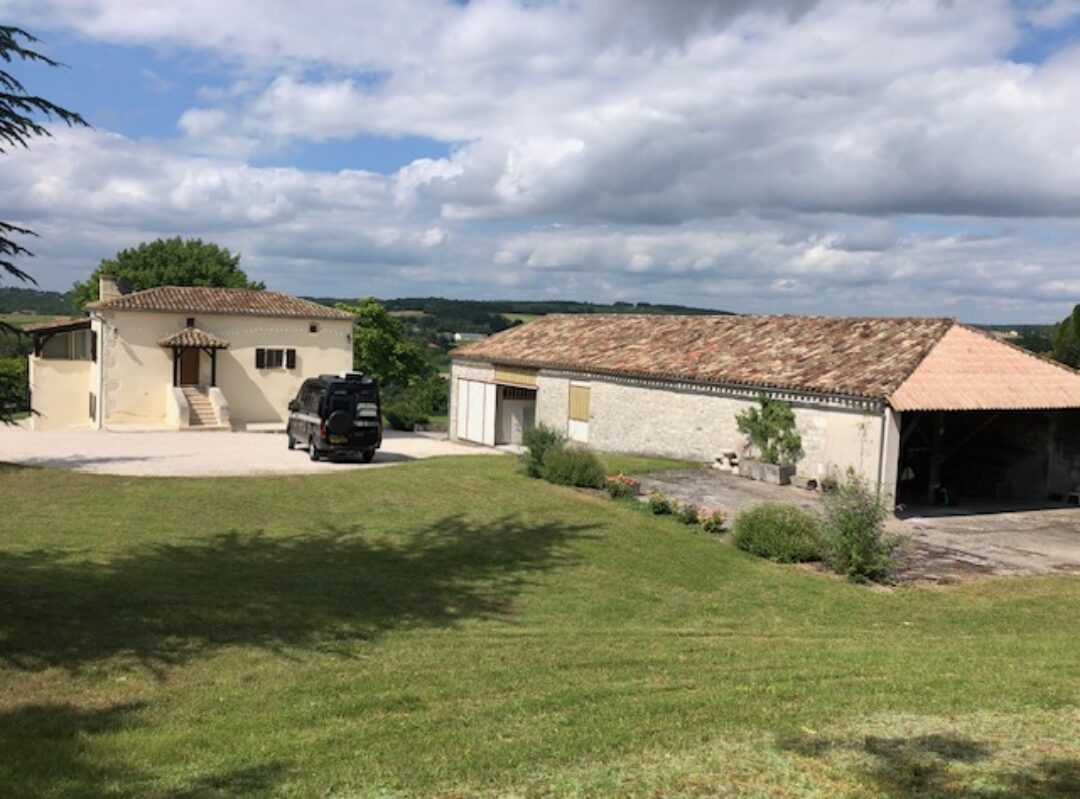We’ve now had the chance to have a more leisurely look around the town that drew us here, away from the busy market day. Whilst it is very much a tourist magnet, it is also a town that seems alive with shops, facilities and schools. The town sits on the confluence of the Aveyron and Bonnette rivers and its origins go back to the 8th century when it was founded around a Benedictine abbey. It’s named after Antoninus of Pamier who brought Christianity to the area and the town was renamed Saint Antonin Noble Val by Louis XIV in the 1600s. The former town hall, the ‘Maison Romane’, which dates back to 1125, is reputedly the oldest civil building in France. The building has a (newer) belfry on the top and the narrow street behind it now houses a restaurant where we had lunch on the terrace after a morning walk along the river.

We then followed part of a historic trail around the town, ( or as much as Joe could handle in one go – it was very hot in fairness), to look at some of the notable buildings.



The proximity of the rivers played an important part in the industrial development of the town and at one point there were over 40 tanneries in the town producing around 200,000 hides each year. The last one operated until 1925 and one of the older tanneries can be found tucked away in a corner of the town.

In its more recent heyday the town must have been very elegant for the visiting bourgeoisie and also boasted a thermal spa, located opposite the station, and with a grand staircase leading down to a promenade area by the river. Apparently floods in the 1930s destroyed the system that conveyed the water from its source to Saint Antonin, which put an end to the thermal baths but the building is now used as a concert hall.


The religious history of this area is interesting as well and many of the towns and villages we have seen were Protestant or Cathar and suffered during the Albigensian crusades and the religious wars. Even those villages perched high on hills, that could defend themselves well, were often starved into submission. We are in the Occitanie region of France, a new ‘super’ region that was only created in 2016 when the former regions of Languedoc-Roussillon and Midi-Pyrénées were merged. The new name refers to the historical name for the south-west part of France and the use of the Occitan language where ‘oc’ was used for ‘yes’ rather than ‘oui’. Many of the villages and towns have signs in both French and Occitan and the Occitan cross and flag is seen quite widely.
Our days tend to alternate between a walk somewhere, a cycle ride and going out on the motorbike. Having tackled the cliffs behind us (Roc d’Anglars), a walk to Roc Deymié at the top of the cliffs in front of us still remained. The usual steep incline at the start was rewarded by the wonderful views on the way up and at the top (including some landmarks we recalled from The Hundred Foot Journey film). The ridge top walk gave us views again down onto the town, onto the campsite and along the river. And there’s always a beer to look forward to when you get back into town …..



